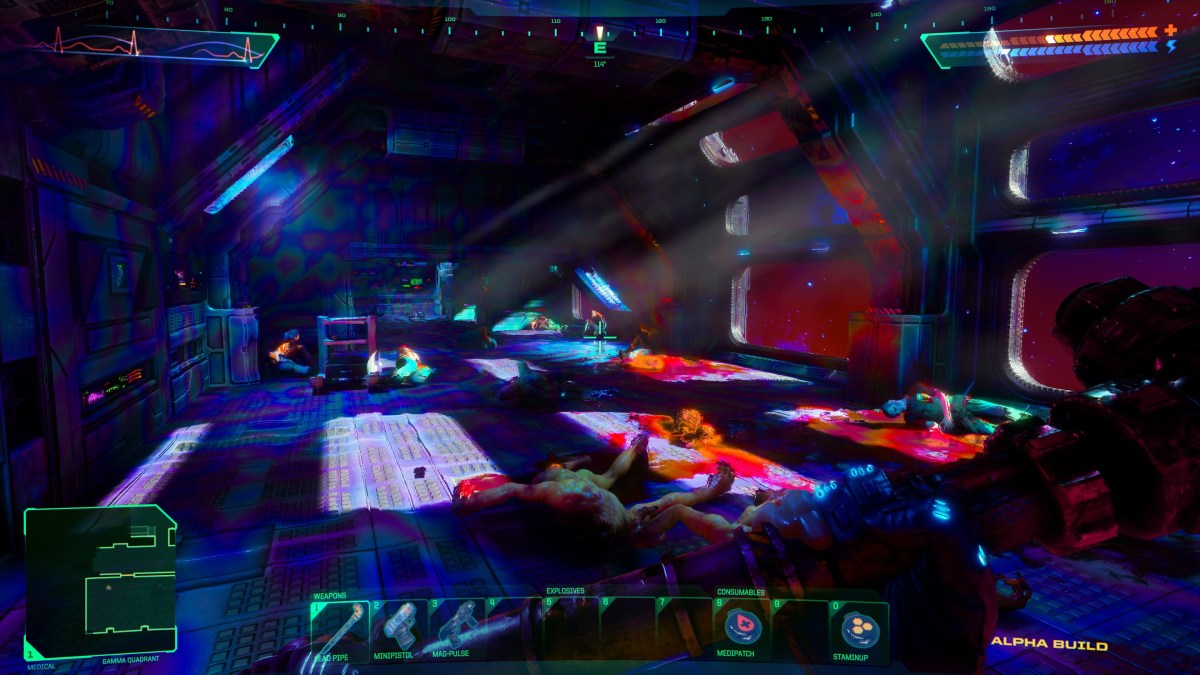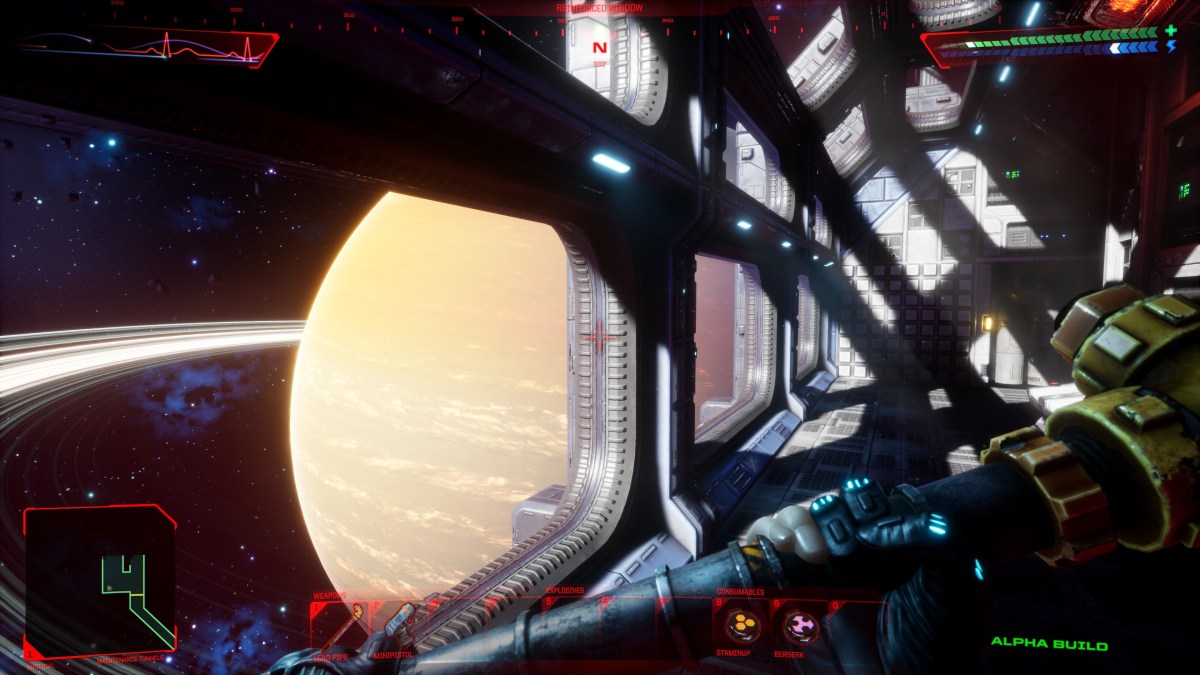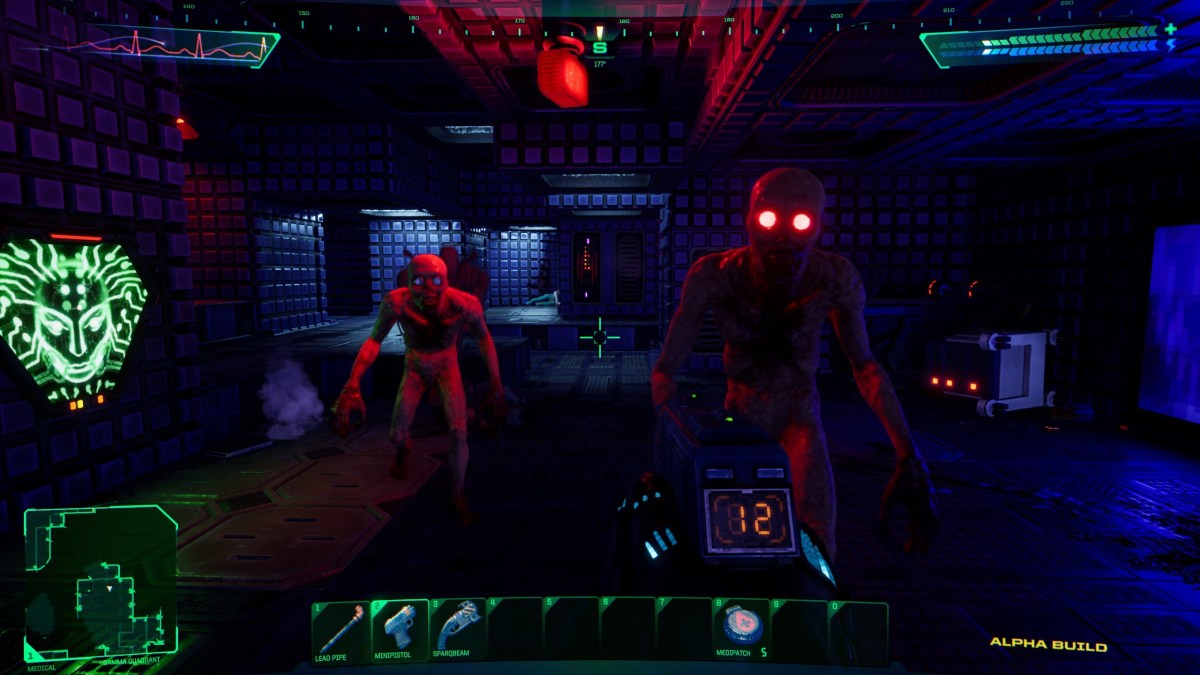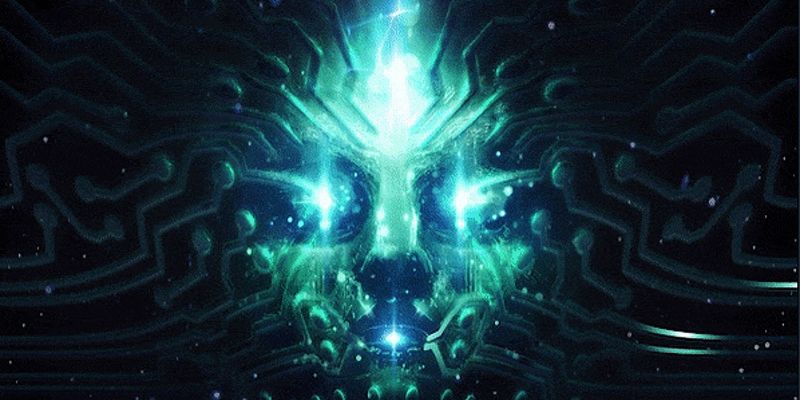I like to think that clobbering a naked humanoid to death with a stick in self-defense is a primal instinct. Granted, you have to make some adjustments in the System Shock remake. The stick is a lead pipe or, better yet, a wrench. The humanoid is a grotesquely deformed mutant with void-like eyes and sinewy muscle stretched taut over a stooped frame. The primal instinct sometimes veers into inexhaustibly satisfying bouts of prolonged violence, punctuated with various stimulants and cybernetic implants pilfered from behind 451-coded doors and containers.
But the basic idea is survival, when the options are sprinting away down disorientating and claustrophobic corridors or repeatedly applying stick to face.
These encounters are also representative of the System Shock remake’s demo as a whole, caught as it is somewhere between the long shadow of the original System Shock and the various spiritual successors, sequel, imitators, and borrowers that followed and refined its legacy. On one hand, the mutants recall the ghoulish plate-eyed abominations from the 1994 original – as do the Borg-like cyborgs, the robots, and the garishly ’80s cyberpunk surroundings.

The decision to use pixel art also lends a layer of authenticity. On the other hand, the sophisticated lighting, ragdoll physics, smooth animations, and weighty combat feel distinctly unlike 1994 and much more in the vein of later games it inspired.
It’s difficult to put your finger on what exactly is wrong. It may be the move from low-res 2D to highly detailed 3D enemy models. Even though they remain heavily based on the originals, there is something less unsettling, more cartoonish about the updated models.
But this is a far more polished and satisfying experience than the demo Nightdive Studios put out a couple of years ago. Combat is tighter – melee is less spongy, guns feel tactile, grenades have a large and devastating area of effect, sprinting feels urgent and grounded, and death animations recall the over-the-top brutality of BioShock Infinite.

There is something pleasing about the way containers open and shut and switches operate during exploration, particularly after a rewiring puzzle – a kind of scavenger’s ASMR rooted in the first BioShock’s coin-counting sound effects and hacking minigame. The grid-based inventory management is enough of a nod to System Shock 2, Deus Ex, and 2017’s Prey, while feeling effortlessly quick and easy to manage. And it’s incredible to hear Terri Brosius reprise SHODAN’s aggressive threats and chillingly inhuman announcements.
There is a sense in which the remake is entitled to borrow from all these games, given that they would not have existed – or would have not have existed in the form they do – without the original System Shock. Indeed, there is a sense in which the remake is entitled to borrow from any FPS-RPG-horror hybrid, given its influence.
And yet the confluence of all these borrowed systems and gameplay refinements isn’t necessarily the original System Shock, but a kind of immersive sim meta – a statement about the immersive sim genre as a whole and what 1994’s System Shock did for that genre, rather than an accurate reflection of the genre as it was represented in 1994’s System Shock. Put simply, in borrowing so much from the games that came after the original, the remake risks diluting the spirit of the original.

It’s a challenge that Nightdive is clearly acutely aware of. In 2018 development of the System Shock remake was put on hold and restarted with a new team, going back to original design values. And it’s clear that Nightdive understands those values better than anyone, having released the enhanced edition of the 1994 game in 2015.
So perhaps the problem is intractable. Perhaps it’s best to view Nightdive’s System Shock on its own terms – as a well-made reinterpretation or retelling of System Shock rather than a genuine remake. That way at least I can continue to fight naked monsters in tight spaces without overthinking whether they are naked in quite the right way, or whether they should be naked in the first place.
